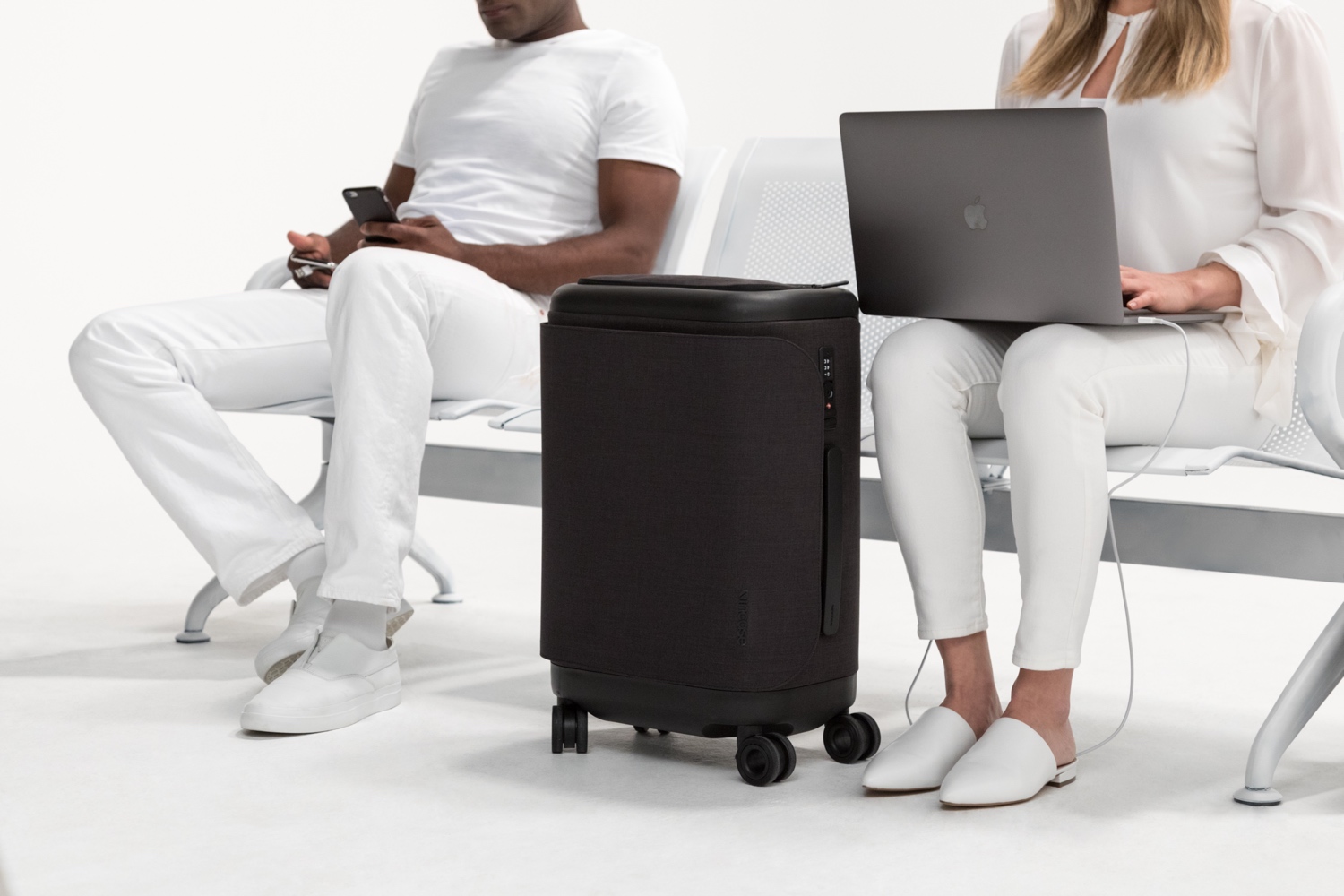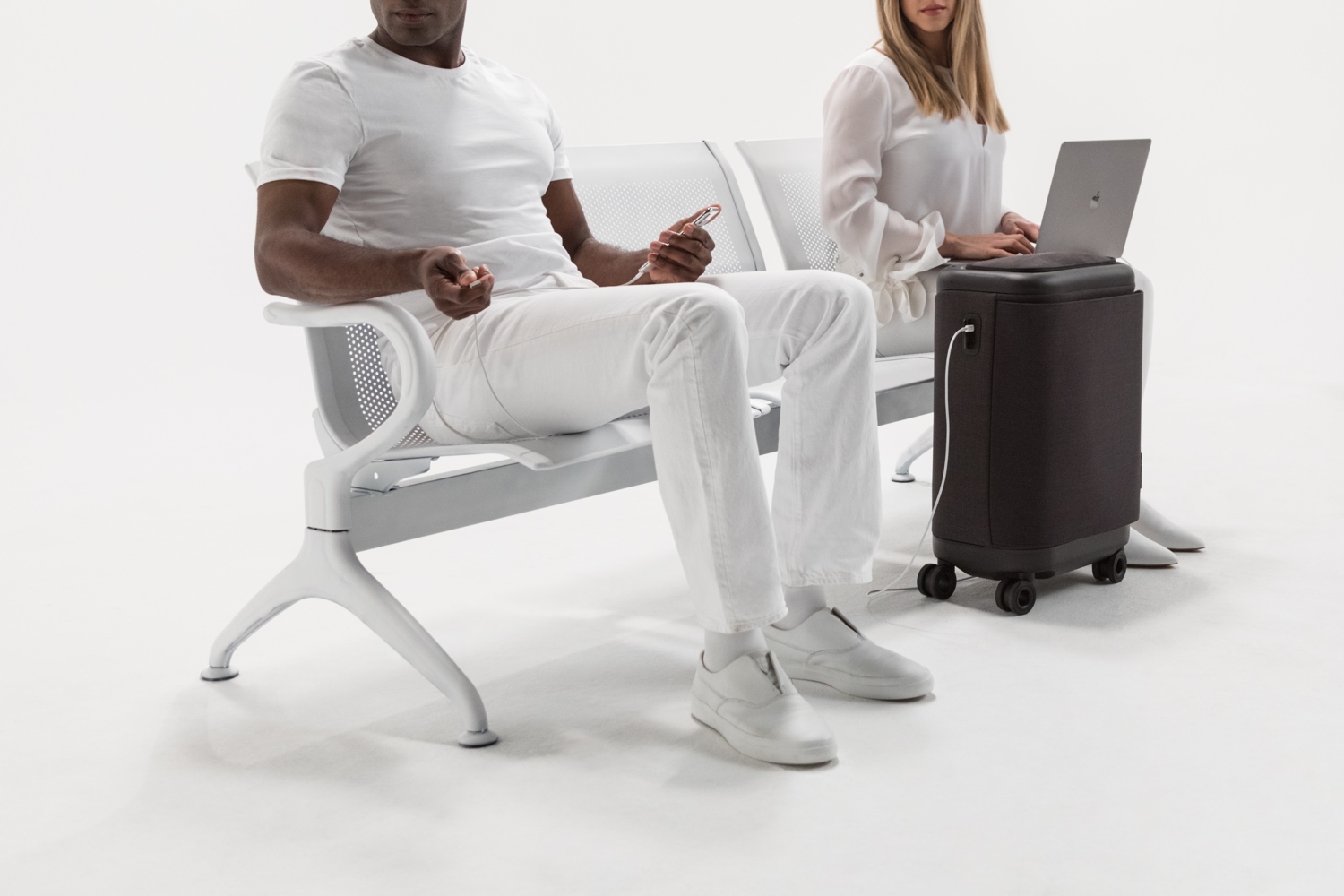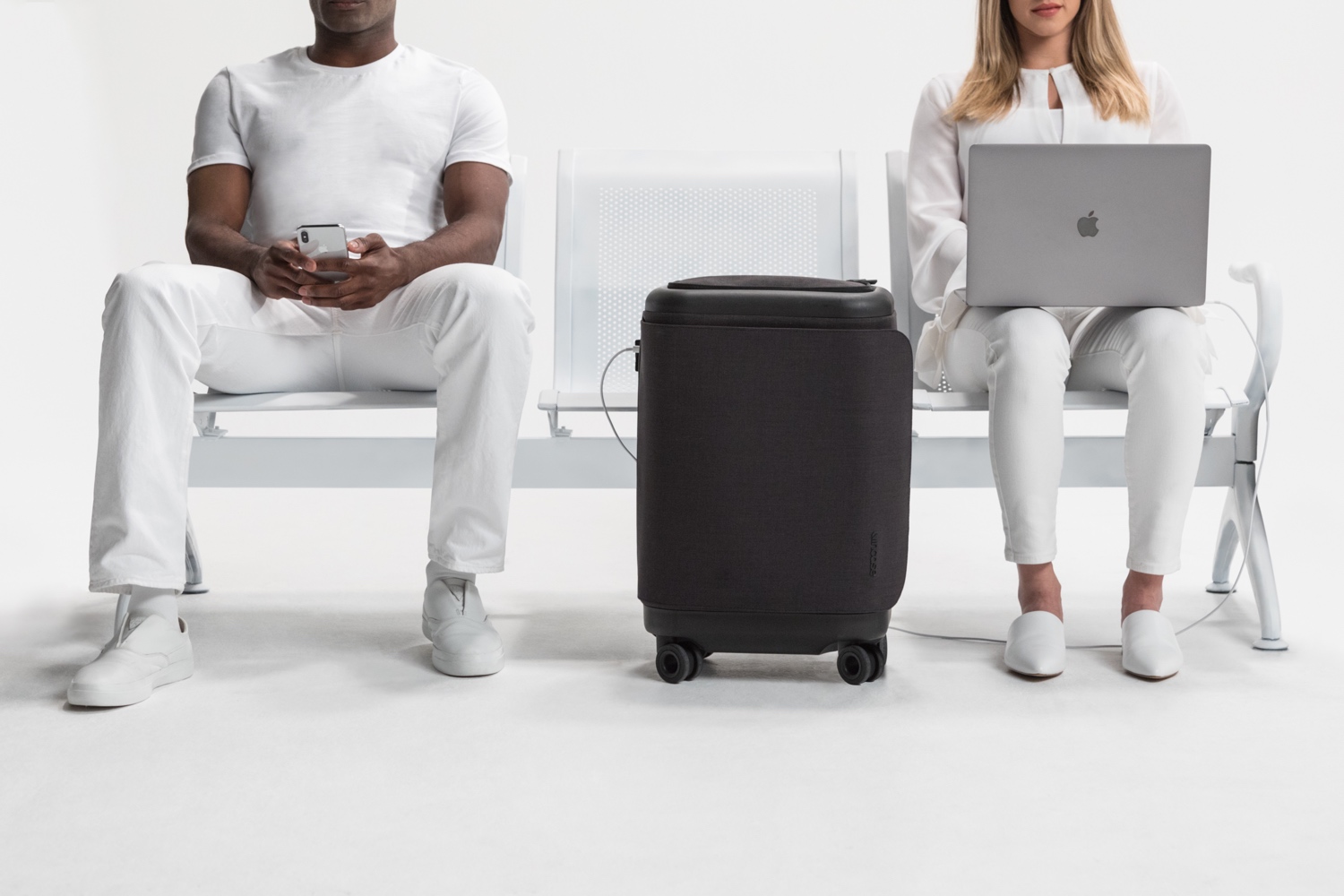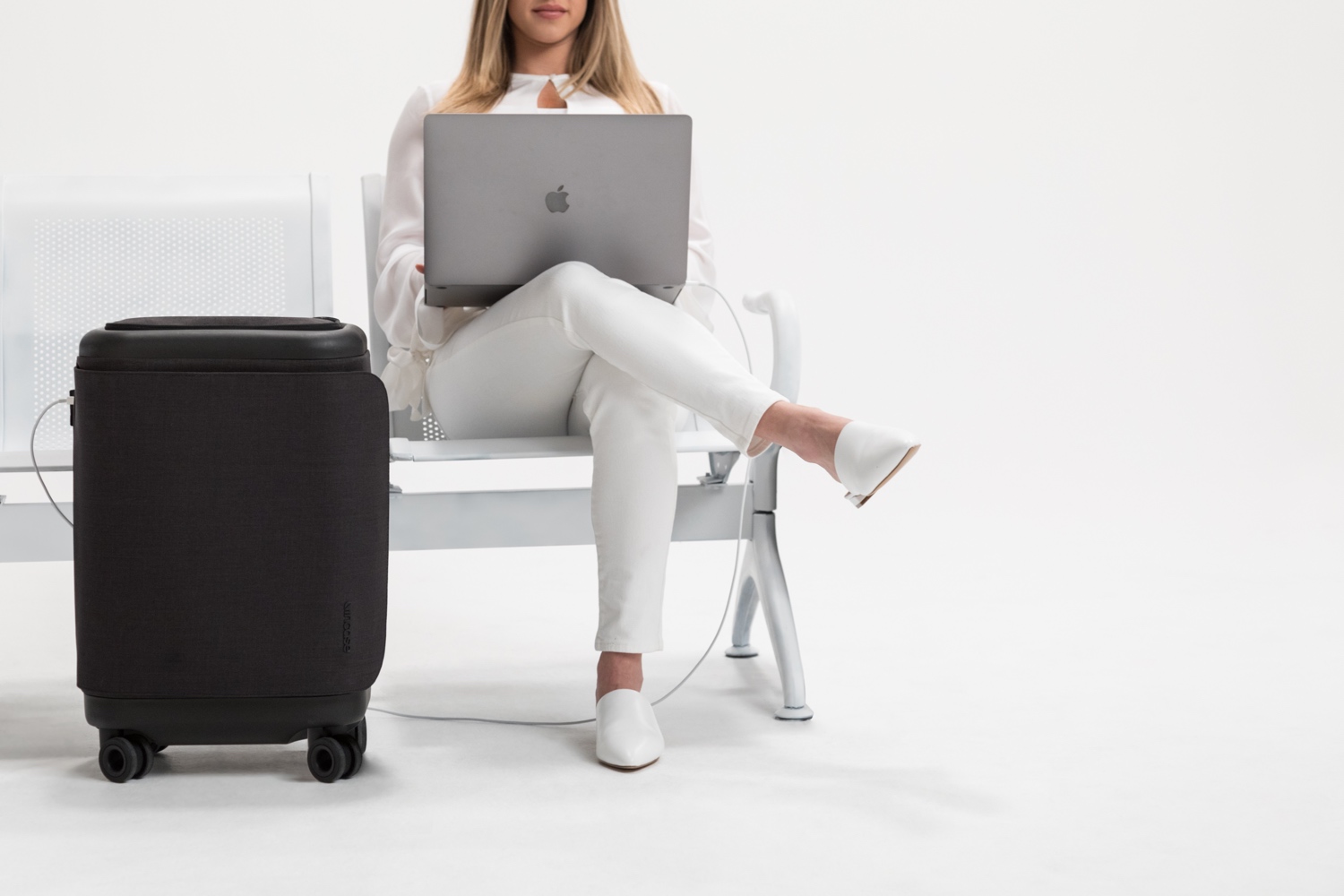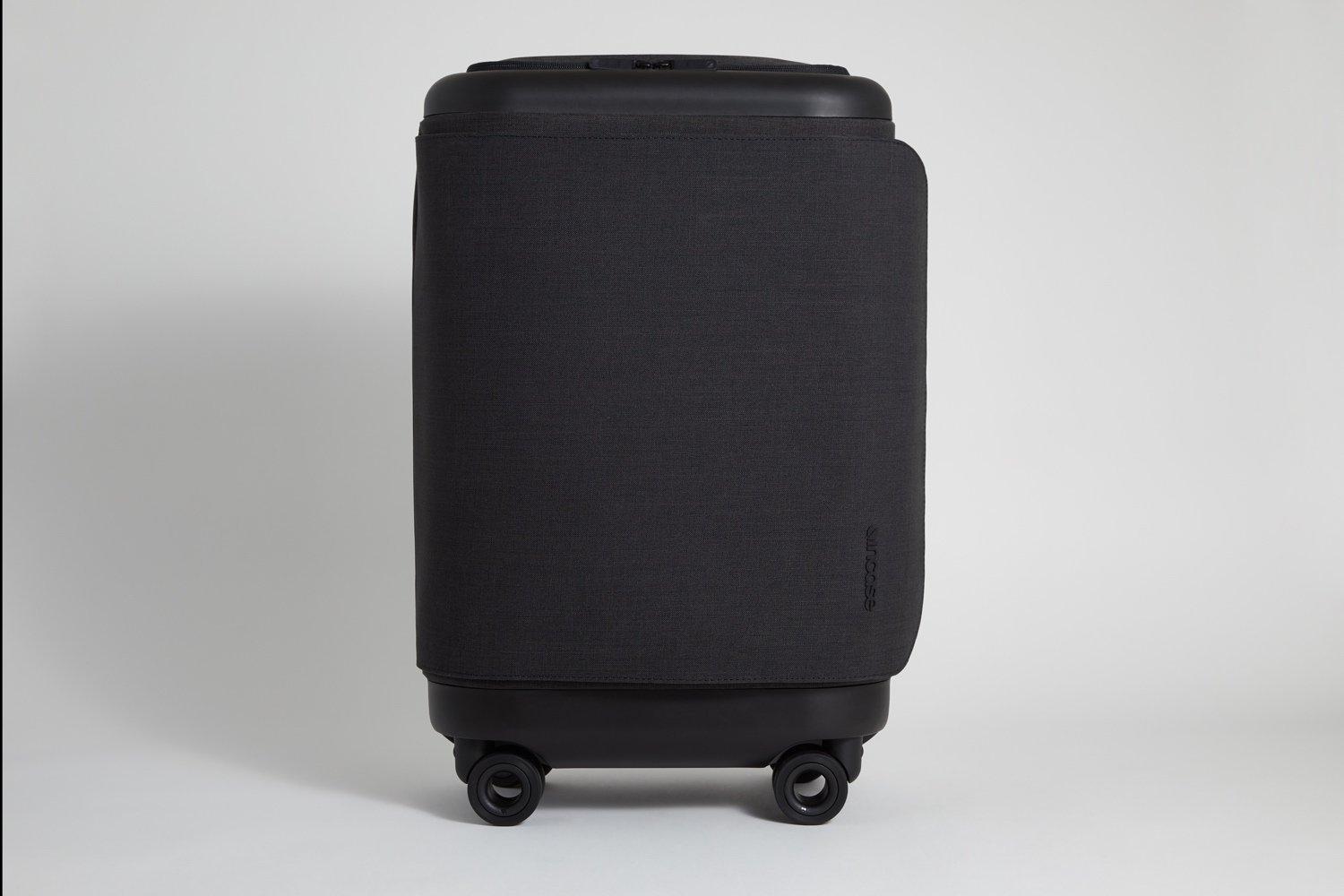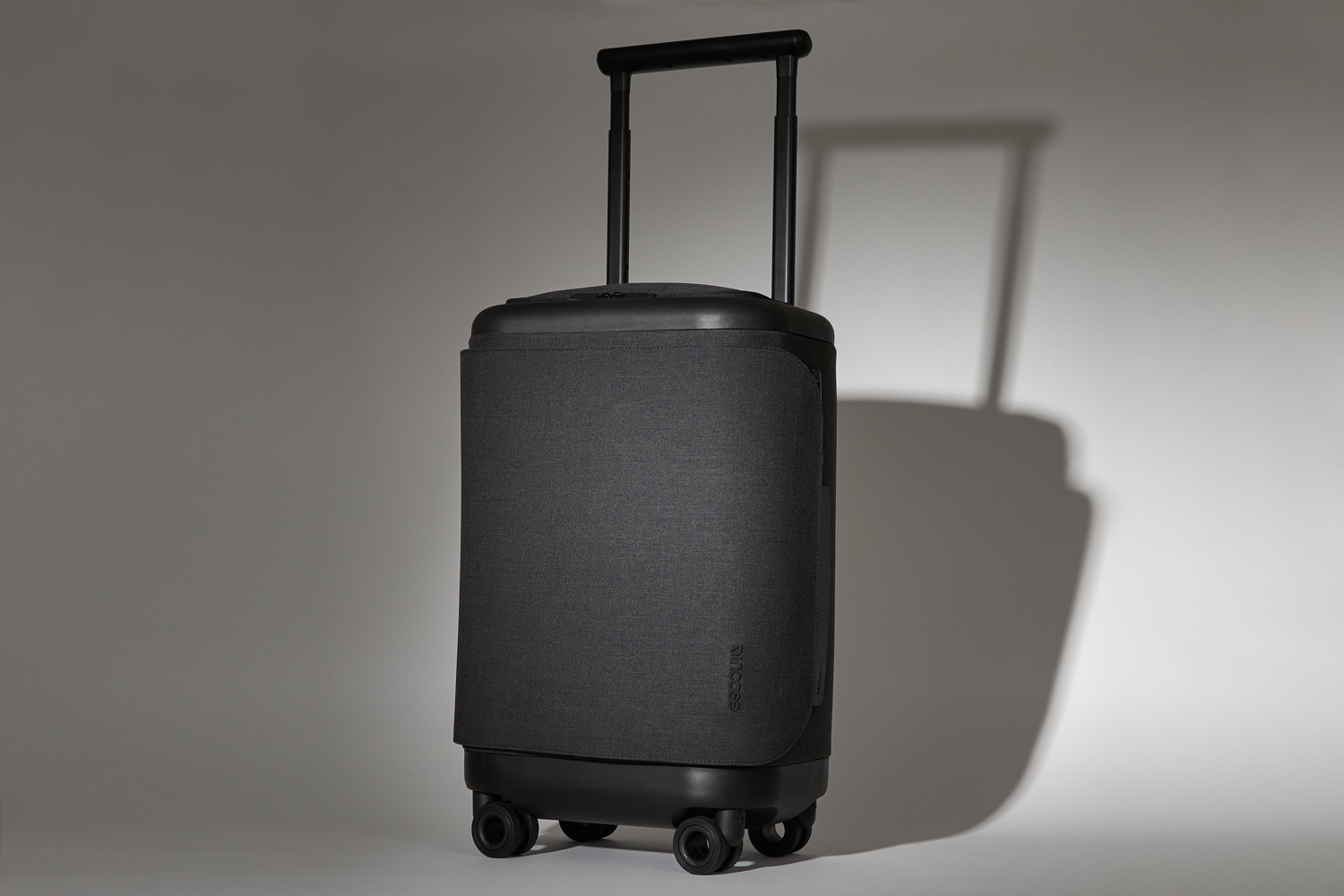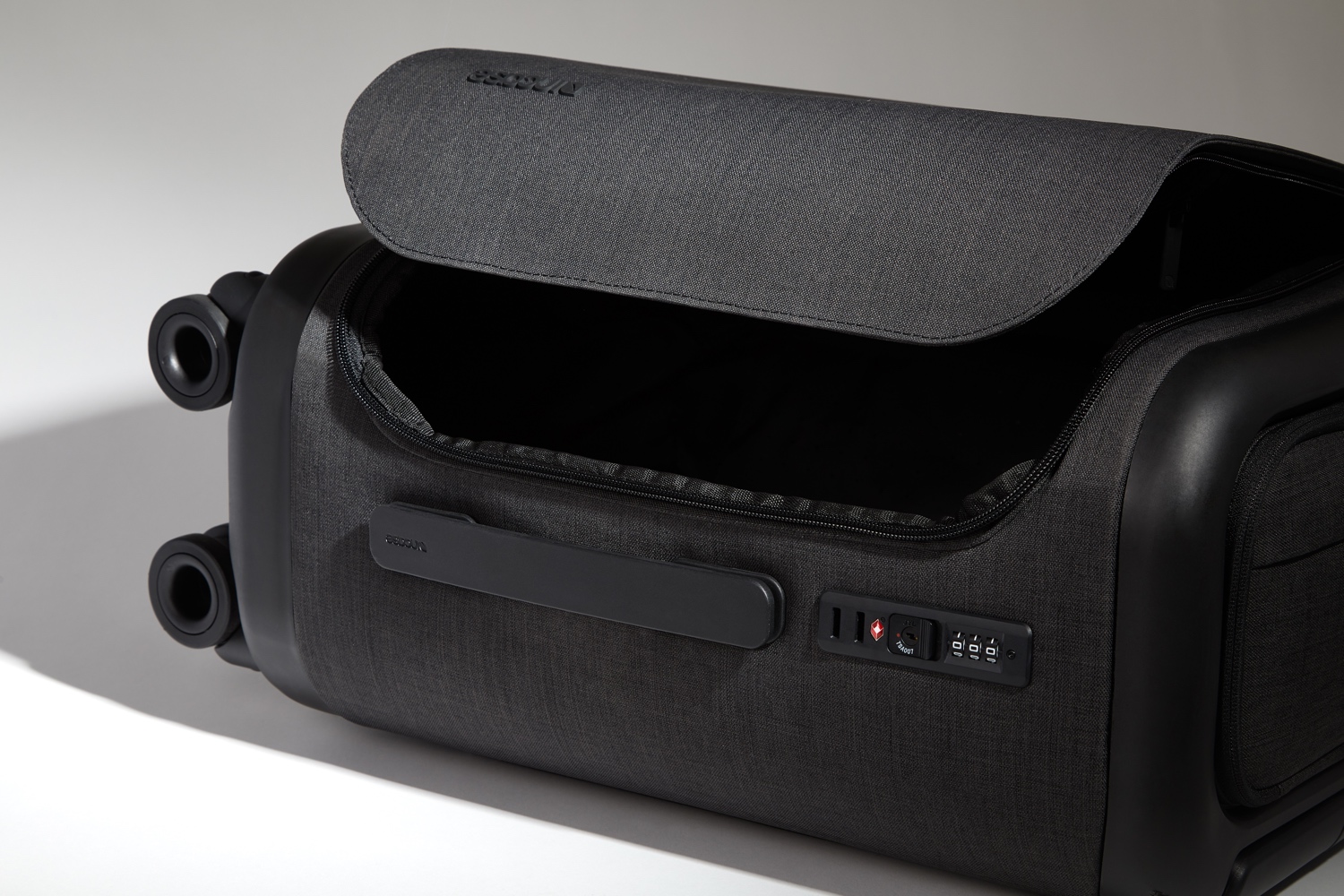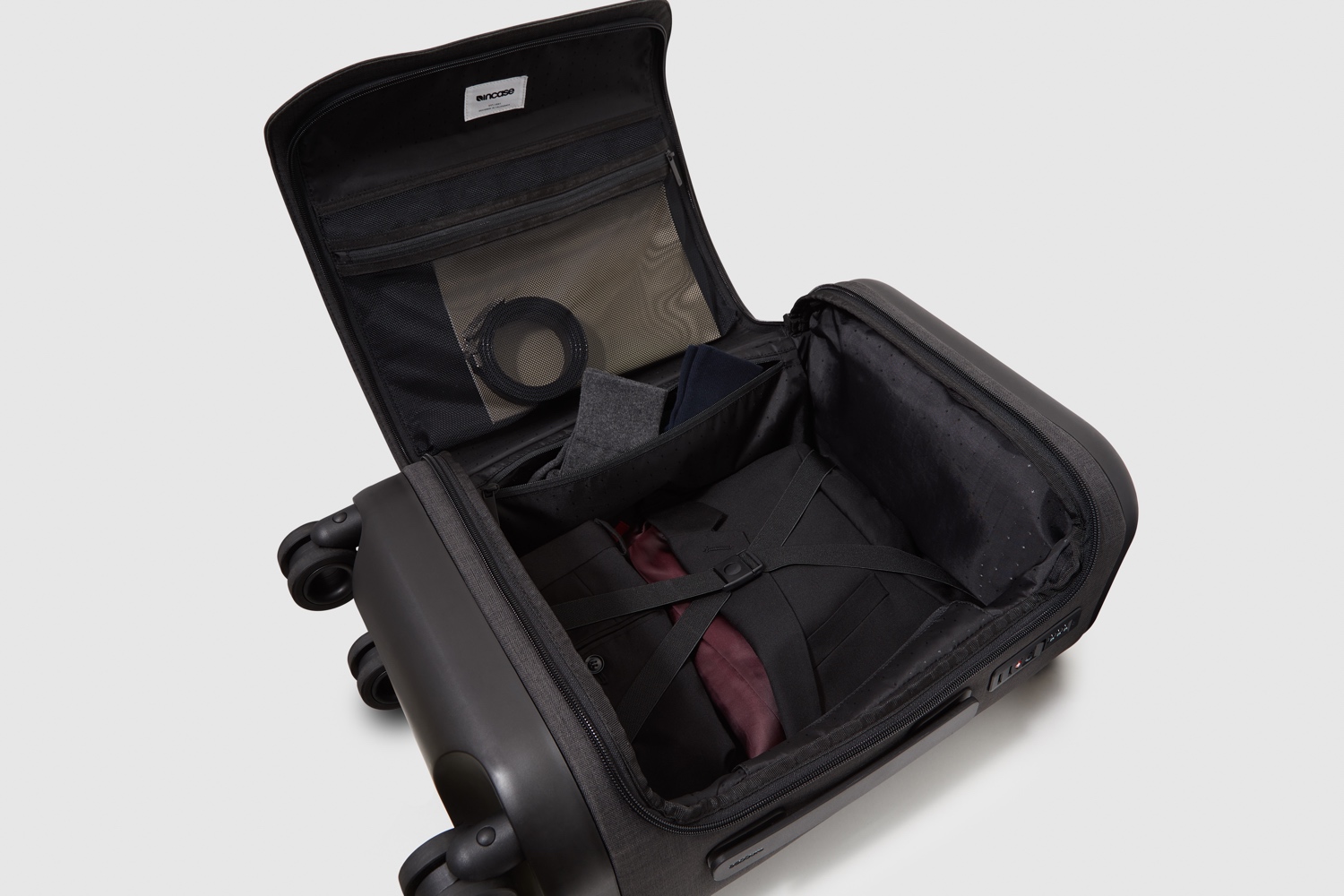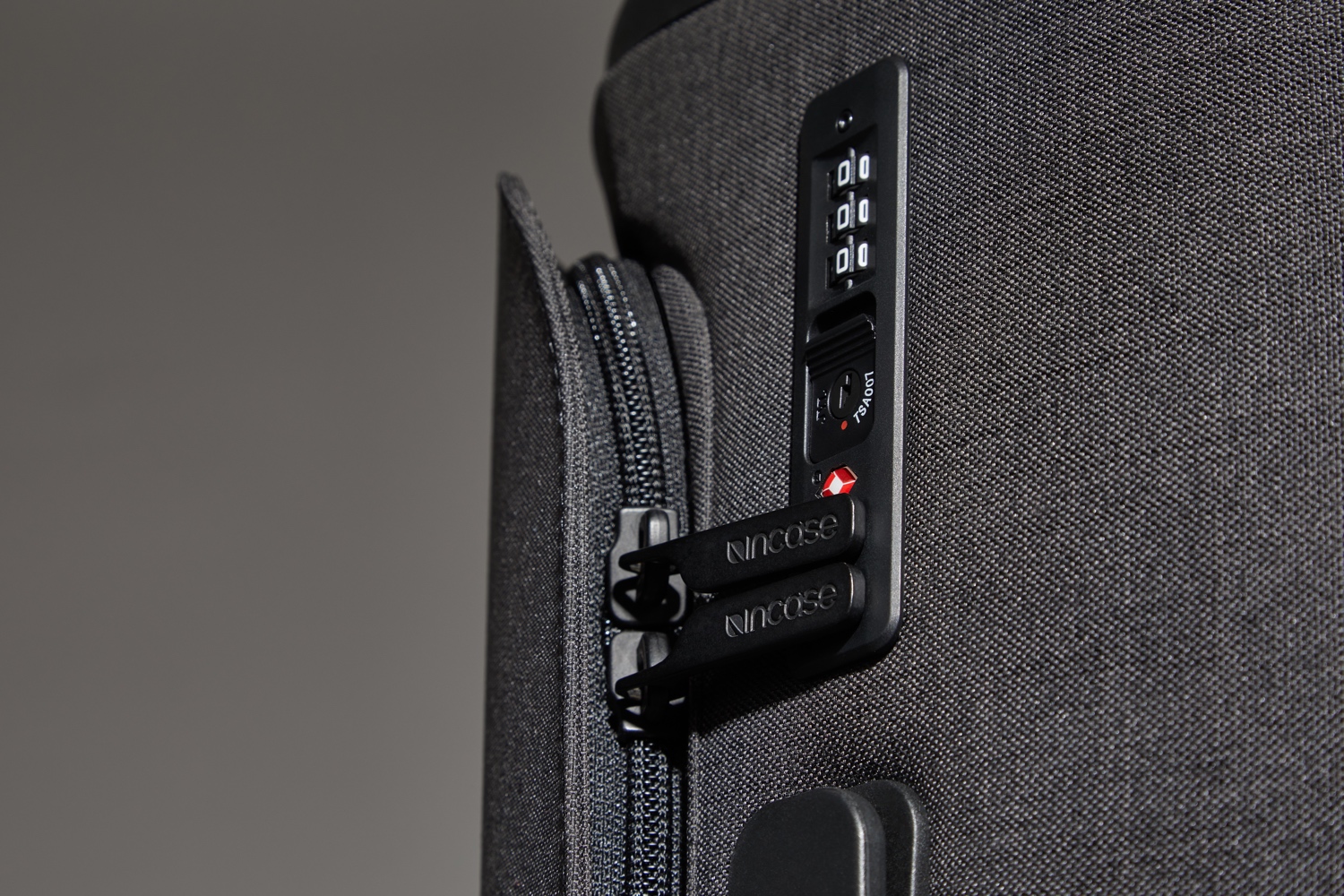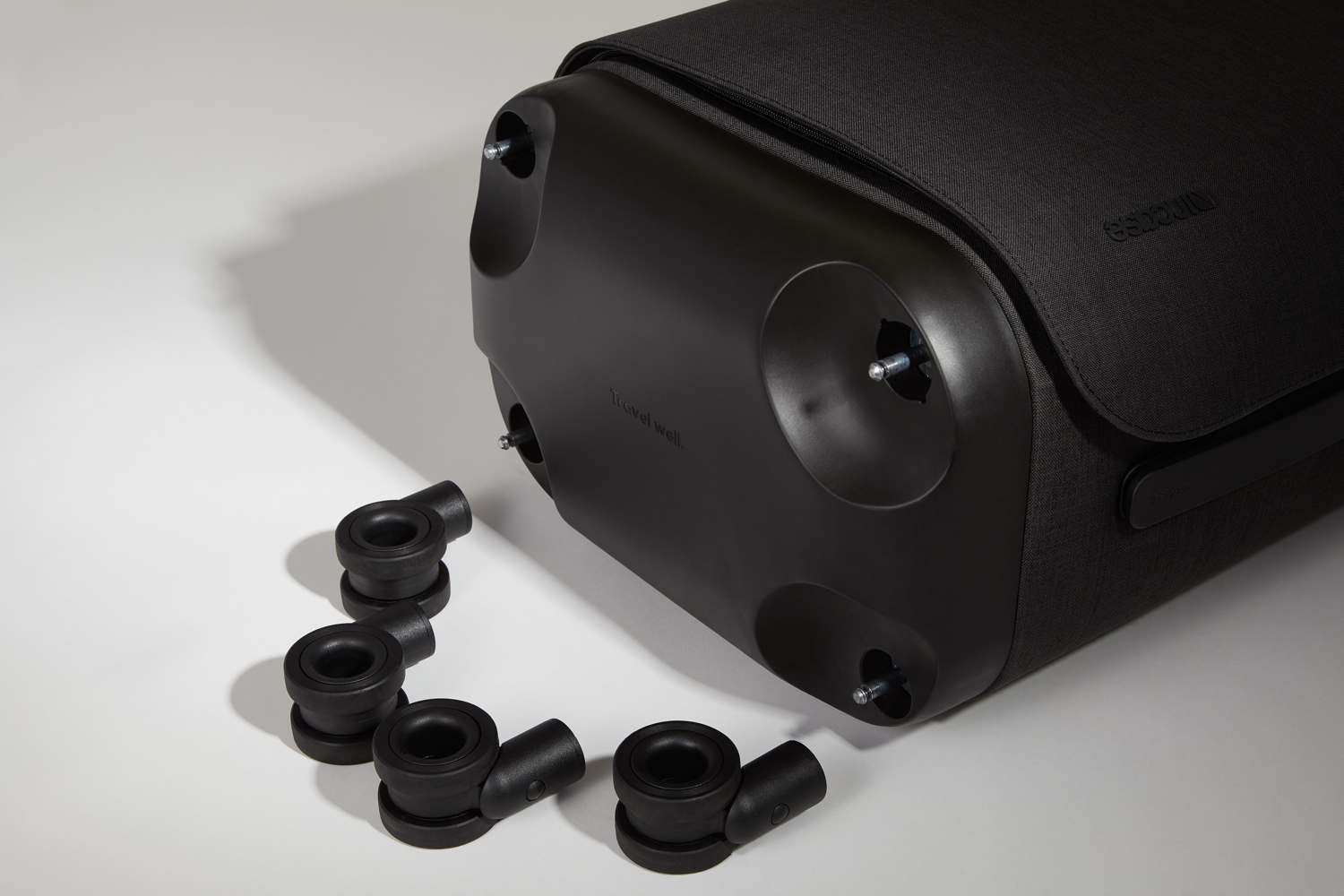After the demise of smart-luggage pioneer Bluesmart, one has to wonder if there’s a future for this type of travel gear. With the ProConnected 4 Wheel Hubless Roller from Incase, we would say, yes. The carry-on luggage, launched on May 15, is the first in a new series of smart bags from Incase (part of the Incipio brand). Sleek yet durable, the 4 Wheel Hubless Roller’s highlight is its large-capacity 20,100mAh battery that’s capable of charging a USB-C-powered laptop as well as two USB-powered devices — like phones and tablets – simultaneously. For travelers who need their gear to stay charged constantly, the Roller is like a portable power station that also happens to hold your clothes.
Incase sent us a unit to check out prior to launch, and while we didn’t have an opportunity to travel with it yet, we did put it through its paces to get some first impressions. It’s a handsome, well-built carry-on, and we love that it has a removable battery that can recharge our MacBook Pro. But we also encounter some annoying quirks with the design, and the $400 price tag will certainly turn off many buyers.
Sleek design that’s unmistakably Incase
For the coolest accessories, Incase has always been at the top. When you want a stylish case or bag for your MacBook Pro or iPad, Incase very likely is your go-to. Besides Apple gear, the company makes bags, cases, and other accessories for cameras, travel, work, and school – all with the minimalist yet high-design that we’ve come to know and appreciate.
The ProConnected Roller follows that design ethos. The black rectangular box is sleek yet understated, reminiscent of luggage in sci-fi films. (A co-worker commented it looked like a trash can — albeit, an expensive-looking one.) Like the popular bags from Away, the Roller has clean lines, but while the former offers fun colors, the latter is more dark and masculine. We know design is subjective, and while we like it, it may not be for everyone.
Four removable wheels at the bottom help the bag glide smoothly (Incase calls them smooth glide wheels, after all). Each wheel can rotate 360 degrees, making it easy to turn and drag the bag whichever way you want.
At the top is a panel that zips open to reveal a compartment for small items like a phone, tablet, passport, keys, etc.; it’s also where you’ll find the removable battery, and a typical USB-A port. Incase calls this the charging tray, and there will be a wireless charging option buyers can add (we did not test this optional feature, which wasn’t available at press time). At the back is a sturdy telescoping handle that’s wide enough to sling a backpack over.
On one side is a small rubberized flap that covers two USB ports — one USB-C and one standard USB. The USB-C charges the battery when it’s inserted inside the bag (a USB-C cable and a wall adapter with interchangeable prongs are included, but you can any USB-C power adapter), but it’s also what charges a MacBook, MacBook Pro, Pixelbook, or any computer that supports USB-C power. The USB-A port, like the one inside the top compartment, is used for other USB devices.
To get to the main compartment, the Roller has an opening that’s somewhat untraditional from typical luggage. After unlocking the Transportation Security Administration-approved lock and releasing the two zipper pulls, the front flap opens like a door as you unzip. Once fully unzipped, you have a relatively large opening for packing. On the inside of the flap is a mesh compartment, and there are two removable mesh pouches for accessories or dirties.
The Roller is a hybrid soft and hard case, made with both polycarbonate and quick-drying 600D polyester fabric that Incase calls Woolenex. There are different grades and strength levels when it comes to polyester in luggage (and it’s considered not as strong as ballistic nylon), but Woolenex, according to Incase, is woven using polyester of two different thicknesses. That offers durability, weather resistance, and an overall light-weight package (Woolenex is used in other Incase products as well). As we haven’t put the bag through a stress test, we can’t agree or disagree with Incase, but the bag is very well made and construction seems solid. Based on our experience with previous Incase products, the company, for the most part, makes reliable gear.
The Roller, when upright, is nicely balanced. It never toppled over, even with its flap door opened. As mentioned, the wheels glide along the surface effortlessly, whether it’s hardwood or carpeted floors. We also had no issues dragging it along concrete sidewalks, but the wheels will definitely have faster wear and tear if you’re pulling the bag over asphalt or any rocky surface. On the plus side, they are removable and replaceable.
Just how smart is it?
The ProConnected Roller isn’t Incase’s first
In the eyes of the airlines, which recently instituted new guidelines on
When removed, the battery functions like any portable battery. In fact, you can use it as such when you aren’t traveling with the Roller. For a 20,100mAh battery, it actually feels lighter than other batteries with a similar capacity. Pressing the single button initiates pairing as well as lights up the battery life status, and there is one USB-C port and two USB-A ports — as with the ports on the bag.

The Roller’s battery has Bluetooth embedded, which is used to pair with the Incase Smart app for iOS and Android. Pairing is fast and easy: After registering an account, the app located our Roller instantly. Commenters in the iTunes App Store said they had issues with the app, but we didn’t have such problems using it with the Roller. The app serves a few purposes: It tells you the percentage of how much battery life is left, and how much longer before it’s fully charged. It also shows the location of your bag on a map, along with date and time of the last-known location. You can ping the battery should you need to locate the bag, which makes an annoying and continuous beeping noise. The Incase Smart app is comparable to other
Location tracking, to us, is iffy — that’s not a ding on Incase, but on all
In terms of smarts, the Roller is not as bright if you compare it to the short-lived Bluesmart Cabin 22, which had GPS, Bluetooth, and cellular tracking, and remote locking. But the Roller is pretty standard when you compare it to most smart carry-on luggage, like the Away. What the Roller has, besides good looks, is that large-capacity battery that can recharge a laptop, or a phone for several days. It’s especially handy if you carry multiple devices, like a tablet and camera, and the ports are easily accessible. We had no trouble charging a MacBook Pro and iPhone X at the same time. It may not be the smartest bag, but it’s certainly the brawniest.

How much can you pack?
While the ProConnected Roller’s main compartment has a good-sized opening, it isn’t as large as luggage with a panel that opens completely. Despite having overall dimensions equal to other carry-ons, the interior volume seems smaller. Much of the space at the top isn’t usable, as it’s taken up by the battery compartment.
The Roller has plenty of room for a quick weekend trip, but we pushed it to its limits by packing for a seven-day vacation. We packed seven shirts, two light sweaters, a light jacket, a pair of shoes, a pair of pants, seven pairs of underwear, and seven pairs of socks (the weight of the shoes helped counterbalance the bag). The Roller accommodated all theses pieces, but it was pretty full. We couldn’t fit our toiletries bag, so we had to use the mesh compartments — even then, we had to downsize the number of toiletries to the essentials. (Note: Although the mesh pouches are see-through, they don’t meet the TSA’s screening rules.) If we practiced some extreme minimalism and creative packing, we probably could have squeezed in a small dopp kit, extra clothes, and accessories, but we would definitely need to carry a second bag for our computer, cameras, and other gear. Of course, the destination will dictate what you bring, but you should exercise restraint when packing the ProConnected Roller, e.g., you don’t need five pairs of flip-flops.
It looks and works great, but it isn’t perfect
As much as we are enamored with the design of the ProConnected Roller, there are some things we would love to see improved. There could be more after we spend some time with the bag, but these issues were immediately noticeable.
We wish Incase had incorporated a top handle. There is a large handle on one side, but it isn’t convenient if you want to lift it upright or pull it out of an overhead compartment. While the telescoping handle is strong enough to be used in a pinch, it’s not ideal. There is a slim pocket within the top compartment door, which we find somewhat useless other than for documents; Incase could have used it as a place for a handle instead.
Much of the weight centers around where the battery is located. When you carry the bag on its side, you’ll feel the weight shift toward that part. You would need to pack in such a way to help counter-balance the weight evenly (why we placed a pair of shoes at the other end). Now, if you are pulling the bag on its wheels, this is irrelevant. But there were times when we wanted to avoid dragging the luggage across the dirty streets of New York, and we preferred to carry the bag by the handle (it does get heavy when it’s full, obviously, so if you aren’t physically able to, it’s not recommended).
Despite using high quality YKK zippers, we found zipping and unzipping to be less smooth than we would like — not a deal breaker, since the zippers create a good seal. While the top compartment is spacious enough for our small items — a perfect place to quickly stash away things during the security checkpoint — we would have liked another pocket for a magazine or miscellaneous papers (we suppose millennials, a target buyer for such bags, no longer reads paper media).
We also worry about the USB ports on the side, as we had difficulty sealing the rubber cover appropriately. The ports could become damaged if left exposed to the elements.
A better alternative?
Individually, each complaint mentioned above is relatively minor. Collectively, however, it’s enough to make you wonder if the $400 price tag justifies what you get. It’s a stylish carry-on with a battery that packs enough juice to recharge your gadgets; the eye-catching design was noticed by several of our colleagues when we wheeled it by them, and stirred some major luggage envy. But we wish it didn’t have these quirks, and we’d liked it to have been a bit smarter than the competition, or at least have one or two more unique features (a fold-out laptop tray or a retractable power cable, perhaps).
In comparison, the poly-carbonate Away Bigger Carry-On with Pocket is roughly the same size as the ProConnected Roller. It has smooth-rolling wheels with a 360-degree maneuver, and a front pocket that fits a laptop. Although it has a smaller 10,000mAh battery that won’t recharge USB-C
However, as we’ve mentioned in our outlook on smart luggage, you can make any luggage smart — especially a favorite one you already own — by adding a few accessories. In fact, Incase makes two of them: a TSA-approved lock that can be controlled remotely, and a Bluetooth tracker, both compatible with the Incase Smart app. Anker makes a 20,100mAh portable battery that supports MacBooks and other USB-C devices, with an MSRP of $66. All three accessories will cost you around $150, which is less expensive than buying any new
We’re fans of Incase’s product design and workmanship, and despite our concerns, it’s a bag that looks sharp and is great for heavy power users. We think travelers who value design — and willing to sacrifice some functionality in the name of it — would find the ProConnected Roller attractive, but the $400 price tag will deter others. Incase has never been a budget brand, and what you’re paying for is design and quality.
We will be updating this article after some additional road testing.
